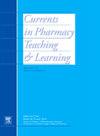Mobile gamification in pharmacy education: A comparative study of learning outcomes and perceptions across gender
IF 1.4
Q3 EDUCATION, SCIENTIFIC DISCIPLINES
引用次数: 0
Abstract
Introduction
In the dynamic realm of educational technology, the “Pharmaceutical Care Mobile App (AF-UGR)” mobile application stands as a novel embodiment of gamification.
Methods
A controlled trial aimed to evaluate the app's impact on academic performance, satisfaction, and engagement among university students. This study included 239 undergraduate Pharmacy students enrolled in the subject of Pharmaceutical Care. Participants were assigned either to a Control group (traditional practice workbook; n = 151) or an App group (mobile gamified application; n = 88). Academic performance was measured through a standardized multiple-choice written exam based on the Pharmaceutical Care syllabus. Student satisfaction and engagement were assessed using an ad hoc questionnaire combining Likert-scale items (ranging from “Strongly Disagree” to “Strongly Agree”) and open-ended questions. Quantitative data were analyzed using descriptive statistics, t-tests, and chi-square tests, while qualitative feedback was reviewed to identify perceived strengths and areas for improvement.
Results
Gender-specific differences were observed, with male students more likely to pass the exam when using the app (OR = 6.67, CI95% = 1.72–25.87), whereas female students demonstrated greater success with the traditional practice book (OR = 2.00, CI95% = 1.01–4.03). Despite these variances, the app received high acclaim from students, averaging a score of 4.87 ± 0.40 out of 5.
Conclusion
The use of the app produced academic results comparable to those achieved through traditional methods, with some variation depending on the content area and student profile. While the app did not consistently outperform the traditional practice workbook, it was positively received by students and enhanced the perceived relevance of the practical content. These findings support its role as a complementary, rather than substitute, resource in Pharmacy education.
药学教育中的移动游戏化:跨性别学习成果和认知的比较研究。
简介:在动态的教育技术领域,“药学服务移动App (AF-UGR)”移动应用是游戏化的新体现。方法:一项对照试验旨在评估该应用程序对大学生学习成绩、满意度和参与度的影响。本研究以药学服务专业239名本科生为研究对象。参与者被分配到对照组(传统练习练习册,n = 151)或应用程序组(移动游戏化应用程序,n = 88)。学业成绩通过标准化的多项选择笔试来衡量,笔试基于药学护理教学大纲。学生的满意度和参与度是通过一个特设的问卷来评估的,该问卷结合了李克特量表项目(从“非常不同意”到“非常同意”)和开放式问题。定量数据使用描述性统计、t检验和卡方检验进行分析,同时对定性反馈进行审查,以确定感知的优势和需要改进的领域。结果:观察到性别差异,男生在使用app时更容易通过考试(OR = 6.67, CI95% = 1.72-25.87),而女生在使用传统练习本时表现出更大的成功率(OR = 2.00, CI95% = 1.01-4.03)。尽管存在这些差异,这款应用还是得到了学生们的高度评价,平均得分为4.87±0.40(满分5分)。结论:使用该应用程序产生的学术结果与通过传统方法获得的结果相当,根据内容领域和学生概况存在一些差异。虽然这款应用的表现并不总是优于传统的练习练习册,但它受到了学生们的积极欢迎,并增强了实践内容的感知相关性。这些发现支持其在药学教育中作为补充而非替代资源的作用。
本文章由计算机程序翻译,如有差异,请以英文原文为准。
求助全文
约1分钟内获得全文
求助全文
来源期刊

Currents in Pharmacy Teaching and Learning
EDUCATION, SCIENTIFIC DISCIPLINES-
CiteScore
2.10
自引率
16.70%
发文量
192
 求助内容:
求助内容: 应助结果提醒方式:
应助结果提醒方式:


